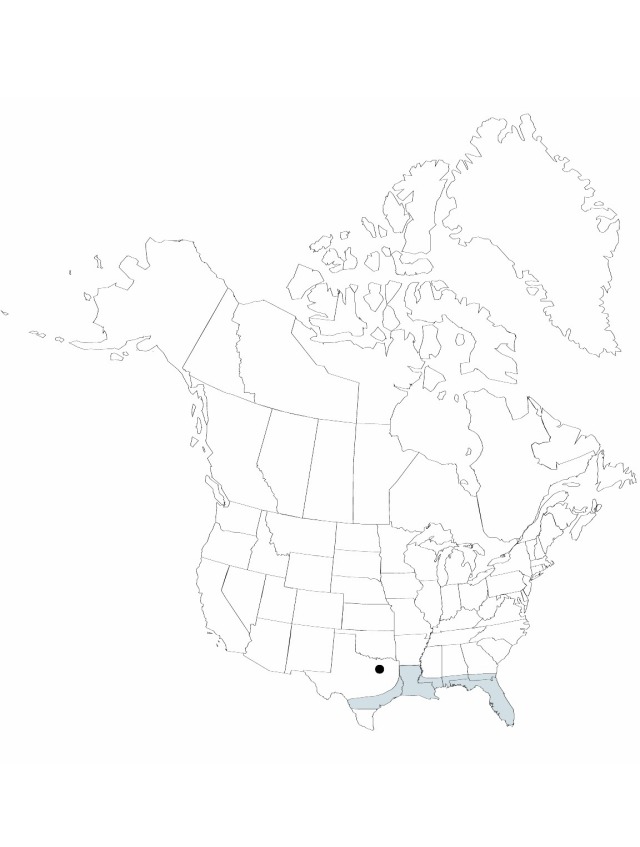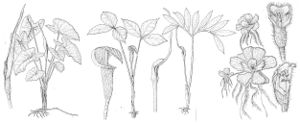Colocasia esculenta
in H. W. Schott and S. L. Endlicher,Meletemata Botanica 18. 1832.
Corms underground, starchy; stolons elongate, with nodes produced at or near surface, spreading horizontally. Leaves: petiole green, often purple apically, 30–80 (–180) cm, spongy and filled with air spaces; blade green to dark green or glaucous blue-green on adaxial surface, usually with red or purple spot at point of petiole attachment, peltate for 2.5–7 cm, 17–70 × 10–40 cm; primary lateral-veins parallel, secondary lateral-veins netted, forming collective vein between primary lateral-veins; apex mucronate. Inflorescences: spathe 20–35 cm; tube green; blade orange outside and in, opening basally and reflexing apically at anthesis to expose spadix, more than 3 times longer than tube; spadix 9–15 cm. Flowers: pistillate flowers pea green, interspersed with white pistillodes; ovaries 1-locular; ovules 36–67; sterile flowers white to pale-yellow; staminate flowers and sterile tip pale orange, stamens 3–6, connate. Fruits orange. Seeds 1–1.5 mm, not observed in flora area. 2n = 28, 42 (Old World).
Phenology: Flowering late spring–late fall.
Habitat: Usually forming large colonies along streams, ponds, ditches, canals, and other wet areas
Elevation: 0–100 m
Distribution

Introduced; Ala., Fla., Ga., La., Miss., Tex., Mexico, West Indies, Bermuda, Central America, South America, Asia, Africa, Indian Ocean Islands, Pacific Islands, Australia
Discussion
Weedy plants of Colocasia esculenta in the United States are essentially all one morphologic form (usually with long stolons and with a red to purple spot on the adaxially surface of on the leaf opposite the point junction where of the petiole joins the leaf and blade and with long stolons). This taxon has been called C. esculenta var. aquatilis Hasskarl in some treatments (K. A. Wilson 1960). Other forms of C. esculenta are cultivated in the flora area both for food and as ornamentals. The species is extremely variable and many varieties have been recognized taxonomically with little of agreement on the application of names. Because of their weedy status and their infrequent flowering, specimens of C. esculenta are not frequently collected, and the distribution indicated here reflects this deficiency. Plants may occur beyond the boundary outlined on the map, but the species does not become established in areas subjected to cold temperatures.
Selected References
None.
